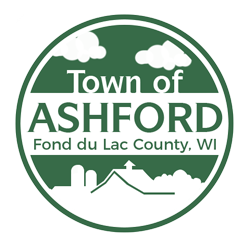By Laurel Walker of the Journal Sentinel Ten years after a state Legislature adopted a landmark law requiring all Wisconsin communities and counties to adopt a comprehensive plan for their communities by Jan. 1, 2010, most have done so. Yet at this 11th hour, many governments are still scrambling to adopt their plans in the next 30 days. Some of them will miss the deadline altogether. Urban sprawl - rampant in the booming economy of the late 1990s - gave rise to the 1999 Smart Growth law as rural areas were being carved up for development in helter-skelter fashion, often with little regard for the public's interest in protecting open spaces or the future ramifications of unfettered expansion. Planning - with resident participation - would be required, cooperation among communities encouraged. Will it work? The real test is ahead, say those familiar with the process. "Now we're going into the phase where local land use decisions have to be consistent with those plans," said Steve Hiniker, executive director of the environmental advocacy group 1000 Friends of Wisconsin, part of an unlikely coalition that included builders, Realtors, planners and legislators who pushed for the law. Litigation - where developers or residents object to the local government's decision in a land use matter - is expected. Governments will be particularly vulnerable to challenge when they attempt to make any development decision if they have not adopted a comprehensive plan. The law for the first time required local governments to look comprehensively at the future of their communities. Each adopted plan must incorporate nine specific elements: housing; transportation; utilities and community facilities; agricultural, natural and cultural resources; economic development; intergovernmental cooperation; land use; issues and opportunities; and implementation. Public input required The law also requires that the public be involved throughout the planning process - a requirement met with varied results, from full-blown resident engagement to single public hearings. State grants were offered to help pay for local planning efforts. By the state Department of Administration's count in August, about 81% of the 1,922 cities, villages and towns reported that they had either adopted a comprehensive plan or were on their way to one. Counties had the best record, with 96% reporting plans finished or well under way. About 83% of cities and 79% of towns had adopted plans or were approaching completion. Before the law was passed, by comparison, only 29% of all Wisconsin communities had a land use plan, according to the 1000 Friends. The Department of Administration awarded $21 million in state grants to 1,156 communities in the last 10 years - most of it to encourage multijurisdictional planning. Richard J. Stadelman, executive director of the Wisconsin Towns Association, said that cooperation among neighboring governments as well as public participation in the process were among the big benefits spurred by Smart Growth. "I wouldn't say anyone's plan is good or bad, because it's their plan, their choice," he said, when asked about the quality of the planning. "That's part of this whole process. That's up to the citizens of the community. Those plans are going to be the basis of future decisions." He said most of the counties took the lead on planning by seeking grants and working with cities, villages and towns. That can help future relations between communities, he said. In Waukesha County, 28 of 37 municipalities joined the county's effort to update the county's already existing 1996 comprehensive plan. Up to $812,000 in state funds paid for the effort. Some places paid their own way, either because they didn't apply for state funds or didn't join a multijurisdictional effort. New Berlin, for example, spent nearly $500,000 of its own money on consultants - mostly to update its 1987 master plan and develop a water resources management plan. Though New Berlin Director of Community Development Greg Kessler was criticized for that amount, when some communities spent a fraction of that, the expense was worth the result, he said. "We really needed to focus on the comprehensiveness of things. Not just building pretty buildings and land use," he said. "If we're going to be committed to good development, let's do it right." Public participation was a significant requirement of the state law, but one that took on different forms in different places. In some - Milwaukee and New Berlin, for example - multiple neighborhood meetings and open houses were held. New Berlin also used neighborhood planning committees and sent out notices in every utility bill to boost involvement. Waukesha County engaged residents on its planning panels, held focus groups, sent out a survey to 27,000 people with replies from 8,700, organized open houses and held a public hearing. Because some communities haven't met the deadline - even after 10 years and with state funds - legislation is pending that would extend the deadline to 2012 and could offer guidance in defining when plans and zoning regulations that enforce the plans are consistent, as required by Smart Growth. Neither Hiniker, Stadelman nor Larson were certain when or if those changes would pass. Those municipalities who miss the Jan. 1 bull's-eye face no state-imposed penalty under the law. But they all agreed that lawsuits over future community development decisions are nearly certain. "We still have people saying, was it worth it?" Stadelman said. "Until they get to the point that they're challenged on a land use decision, we'll then see how much benefit there is in the long run."
